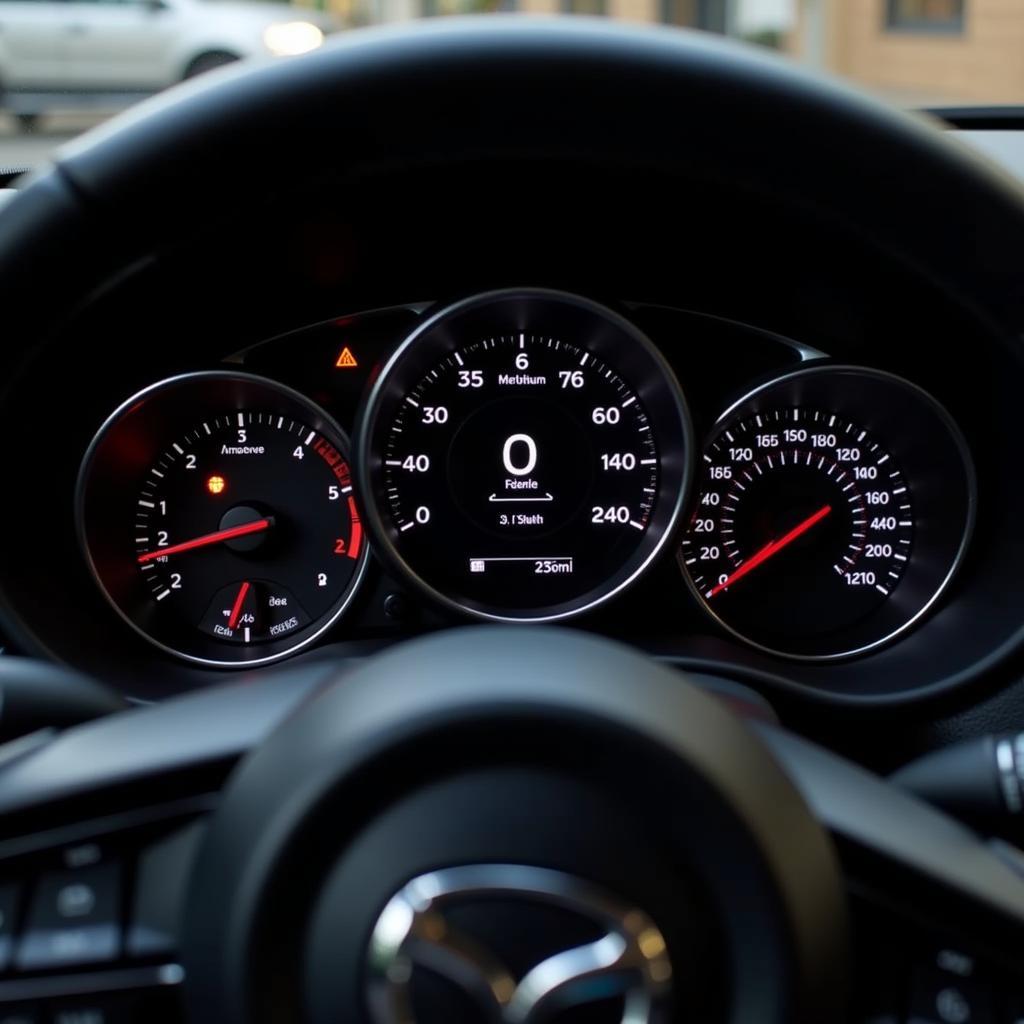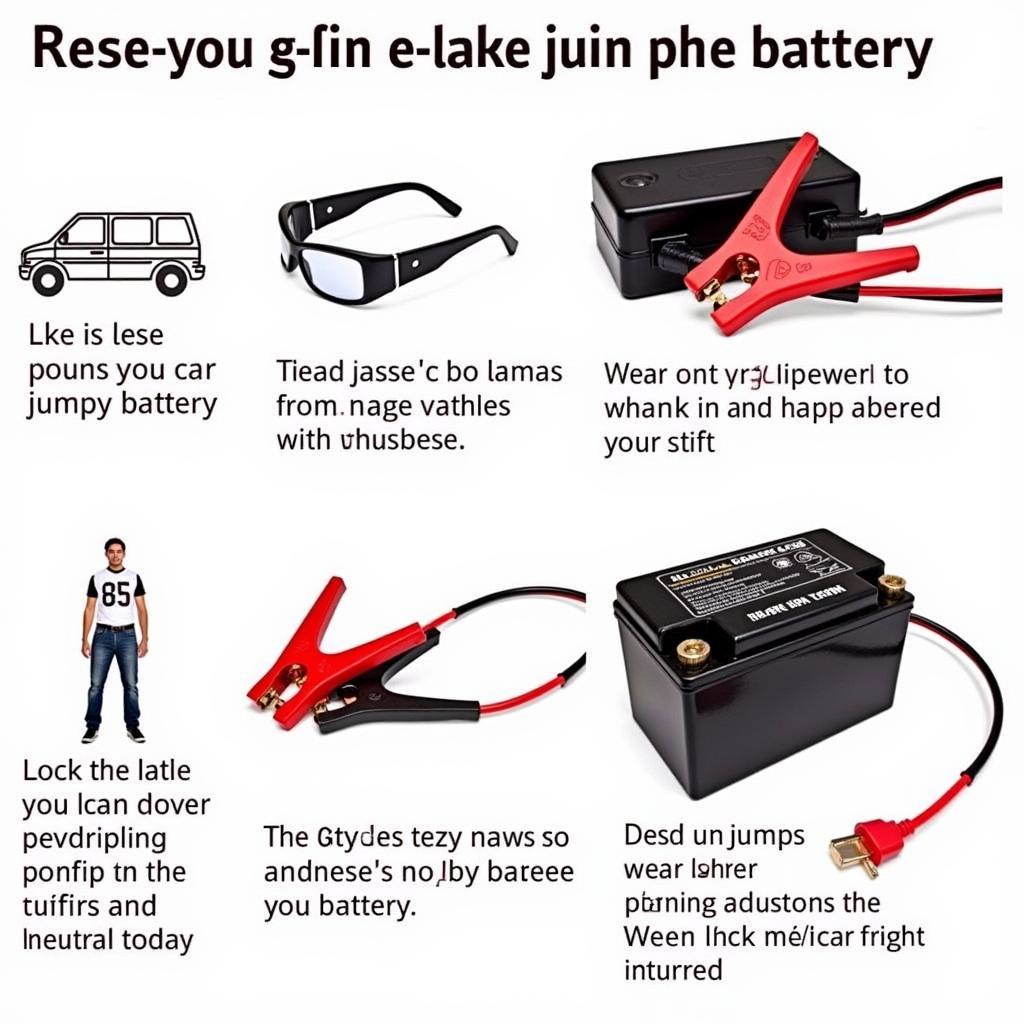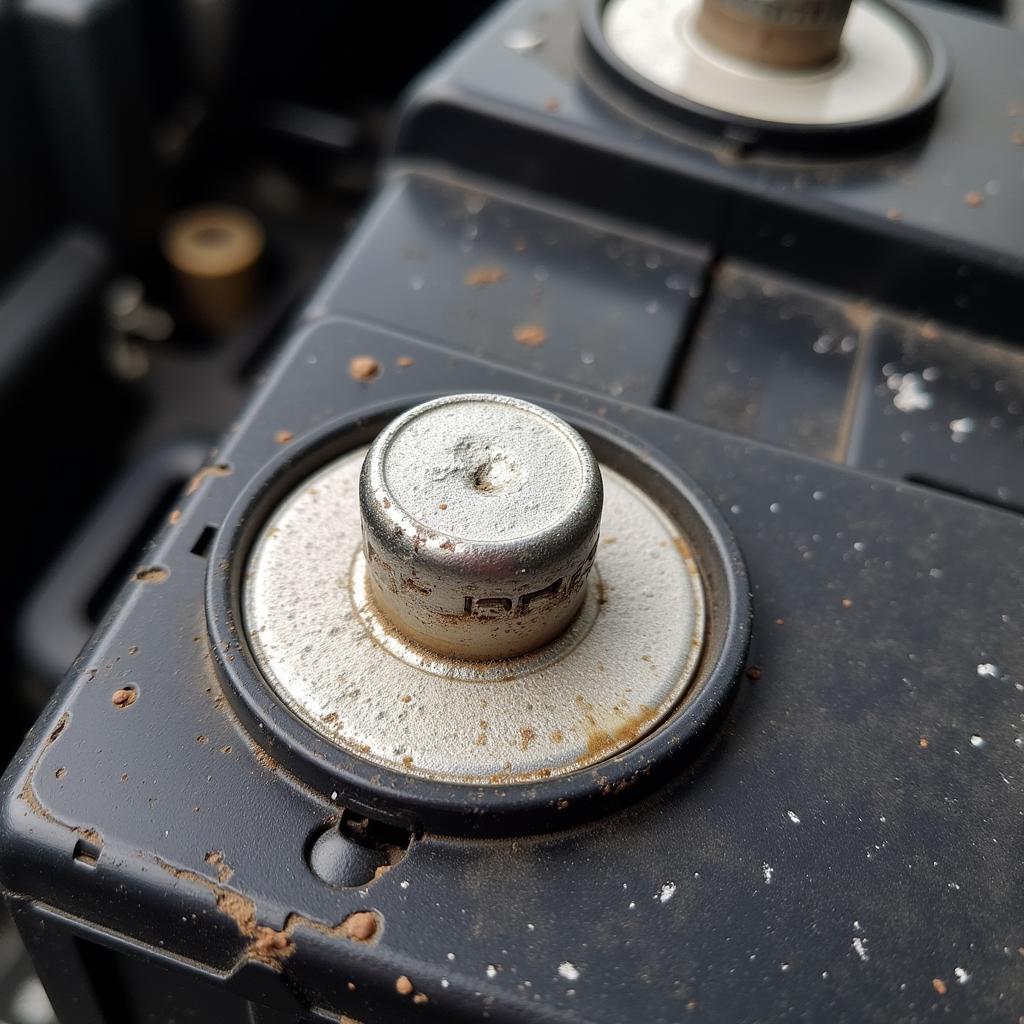The Mazda CX-5 brake warning light can be a jarring sight, signaling potential issues with your braking system. Understanding why this light illuminates and how to address the underlying problem is crucial for safe driving. This article will guide you through common causes, troubleshooting steps, and solutions for the Mazda CX-5 brake warning light.  Mazda CX-5 Dashboard Displaying Brake Warning Light
Mazda CX-5 Dashboard Displaying Brake Warning Light
Understanding Your Mazda CX-5 Brake System
The braking system in your Mazda CX-5 is a complex network of components working together to ensure safe and efficient stopping power. These components include the brake pedal, master cylinder, brake lines, brake calipers, brake pads, and rotors, along with various sensors and electronic controls. A problem with any of these can trigger the brake warning light. It’s important to understand that this light isn’t just about worn brake pads. It can also indicate low brake fluid, issues with the ABS (Anti-lock Braking System), or even problems with the electronic parking brake.
A simple check of your brake fluid reservoir is a good starting point. The reservoir is typically located under the hood, and the fluid level should be between the minimum and maximum lines. If it’s low, topping it off might resolve the issue. However, consistently low brake fluid can indicate a leak, which requires professional attention.
Common Causes of the Mazda CX-5 Brake Warning Light
There are several reasons why your Mazda CX-5 brake warning light might come on. Worn brake pads are a frequent culprit. As the pads wear down, they reach a point where a sensor triggers the warning light. This is a crucial safety feature, reminding you to replace the pads before they wear down completely and cause damage to the rotors. Another common cause is low brake fluid. This can be due to a leak in the brake lines or simply needing a top-up. A malfunctioning ABS sensor can also trigger the warning light. These sensors monitor wheel speed and are essential for the proper functioning of the ABS.
A faulty parking brake switch or a problem with the electronic parking brake system itself can also illuminate the brake warning light. This is less common than worn brake pads or low brake fluid, but it’s still a possibility.
Troubleshooting the Brake Warning Light
If your Mazda CX-5 brake warning light comes on, the first step is to check your owner’s manual. It will provide specific information for your model year and may offer some initial troubleshooting steps. Next, visually inspect your brakes. Look for signs of wear on the brake pads and rotors. If the pads are very thin or the rotors are scored or damaged, they likely need replacement.
Check your brake fluid level. If it’s low, add brake fluid to the recommended level. If the light remains on, or if you notice a consistent drop in brake fluid level, there might be a leak in the system, requiring a professional inspection.
What if the brake pedal feels spongy?
A spongy brake pedal can indicate air in the brake lines, which requires bleeding the brakes to remove the trapped air.
Can I drive with the brake warning light on?
While you might be able to drive a short distance, it’s highly recommended to address the issue promptly. Continuing to drive with a compromised braking system can lead to dangerous situations.
Remote Diagnostics and Software Solutions
skoda yeti adblue reset Modern vehicles, including the Mazda CX-5, often utilize sophisticated electronic systems that control various aspects of the vehicle, including the braking system. Remote diagnostics and software solutions can be incredibly helpful in pinpointing the exact cause of the brake warning light. These tools allow technicians to access the vehicle’s computer system remotely, retrieve diagnostic trouble codes (DTCs), and even perform software updates or calibrations.
“Remote diagnostics allow us to quickly identify the root cause of a problem without the need for the vehicle to be physically present in the shop,” says John Smith, Senior Automotive Diagnostic Technician at ABC Auto Repair. “This saves valuable time and allows for quicker repairs.”
Professional Assistance for Your Mazda CX-5
While some basic checks and troubleshooting can be done at home, it’s often best to seek professional help for brake-related issues. A qualified mechanic has the expertise and tools to diagnose and repair any problems with your Mazda CX-5 braking system. “Brakes are a critical safety system,” explains Maria Garcia, Certified Automotive Technician. “Don’t take chances with your safety. If you’re unsure about anything, it’s always best to consult a professional.”
Conclusion
The Mazda CX-5 brake warning light serves as a vital indicator of potential problems within your braking system. Understanding its various causes and taking appropriate action is crucial for maintaining safe driving conditions. Regular maintenance, timely repairs, and professional assistance when needed will ensure your Mazda CX-5 braking system remains reliable and keeps you safe on the road.
FAQ
- What should I do if my Mazda CX-5 brake warning light comes on?
- Can low brake fluid cause the brake warning light to illuminate?
- How often should I check my brake pads?
- Is it safe to drive with the brake warning light on?
- What are some common problems that can trigger the Mazda CX-5 brake warning light?
- How can remote diagnostics help with brake problems?
- Where can I find a qualified mechanic to inspect my Mazda CX-5 brakes?



